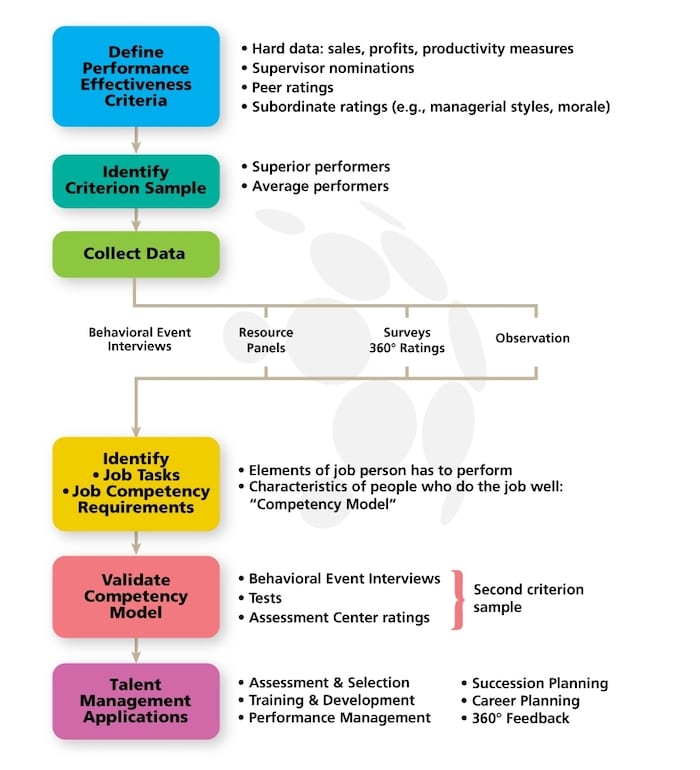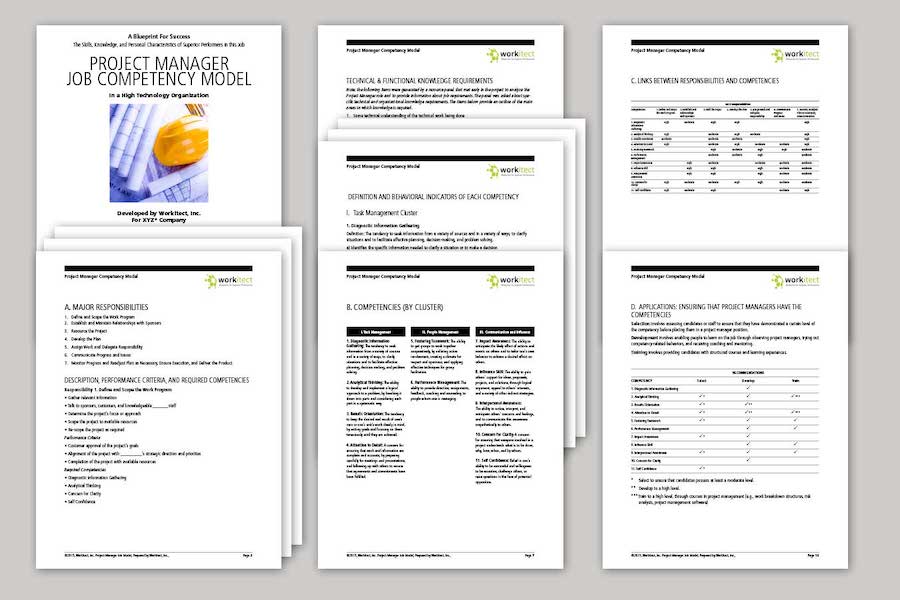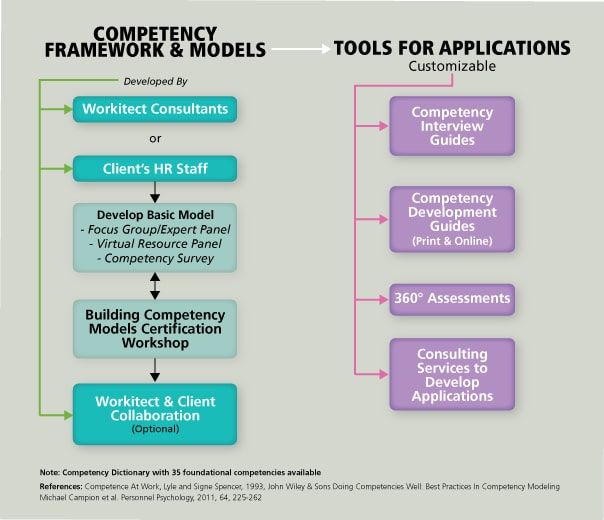Job descriptions, under a variety of names and formats, are used in most organizations. Most human resources information systems incorporate them in some way and connect the content to applications such as performance management and compensation. Most job descriptions include the skills and knowledge required to do a job, but may not include competencies which would include personal characteristics or soft skills.
Regardless of whether skills, knowledge, or competencies are included in a job description, the important question to ask is HOW were they selected. Did the software system do it through artificial intelligence or was it done through group discussion, voting, research into what other organizations have done, or advice from consultants?
An Alternative
Or were they selected based on data collected about how the top performers (versus average performers) did their specific jobs within their specific organization, and what competencies did they demonstrate that enabled them to be top performers, rather than being based on general studies and surveys about a job category applying to all industries? For example, a high-performing customer service representative in AT&T may require many similar competencies to a customer service rep working for the Bank of America. But, there may be seemingly small and subtle differences. The industries are different. The cultures, strategy, and mission are probably different. And perhaps only one competency may be different. But, that difference may be critical when using the job description for selection or development.
The bottom line is this. If an organization wants to include competencies in job descriptions, the competencies should be drawn from custom job competency models developed for specific jobs or job categories, using a validated methodology such as the McClelland/McBer competency-modeling framework developed in the 1970s and 1980s. Read more
Some of the data collected in this process (shown below) can also be used to improve other elements of a job description. One step (4th one down) is the identification of job tasks and job competency requirements.
Example of a Job Competency Model
This model for a Project Manager job is an example of models built by Workitect. These are the major sections of the model.
A. Major Responsibilities
Description, Performance Criteria, and Competencies
B. Competencies by Cluster
Definition and Behavioral Indicators of each Competency
Technical and Functional Knowledge Requirements
C. Links between Responsibilities and Competencies
D. Applications: Ensuring That Project Managers have the Competencies
The model could be edited and sections added or deleted to create a more robust and integrated job description. Or a job description could be edited to include much of the content of the model.
Where to Start
Create or obtain a competency dictionary.
A competency dictionary is essential when developing competency models because it ensures that common skills and characteristics are always described with the same competency names, and serves as building blocks for the construction of individual competency models.
1) It provides a common conceptual framework or starting point for model building. The framework is useful in categorizing initial ideas about job requirements, and the model-building team can modify or add to the framework.
2) The framework can be used in a resource panel by asking participants to rate the importance of a set of generic competencies selected for relevance to the job.
3) The framework can be used to guide the analysis of critical/behavioral event interviews
A dictionary contains clear descriptions of competencies that can be included in competency models. Each model typically consists of 8-14 competencies. Here is an example of a competency:
ADAPTABILITY
Definition: The ability to keep functioning effectively when under pressure and/or experiencing rapidly changing or uncertain conditions, and to maintain self-control in the face of hostility or provocation.
- Remains calm under stress
- Can effectively handle several problems or tasks at once
- Controls his/her response when criticized, attacked or provoked
- Maintains a sense of humor under difficult circumstances
- Manages own behavior to prevent or reduce feelings of stress
- Quickly adjusts and constructively reacts to unforeseen circumstances and setbacks
- Modifies behavior to remain effective in different organizations and cultures
More about competencies by levels of proficiency and job level.
Your organization may already have acquired a license to use a generic competency dictionary or a HRIS software program that includes competencies. If not, consider this simple and practical dictionary containing thirty-five competencies with definitions, and behaviors by level of proficiency and job level. The competencies can be customized or merged with an existing dictionary or competencies in your HRIS.
(The Workitect competency dictionary license can be acquired in a set that includes licenses to customize and use competency development guides and interview guides for each of the dictionary’s thirty-five competencies.)
Build a model for one job.
A good place to start is a model for a Manager job that covers managers in all departments. This is known as a one-size-fits-all model. Options include:
- Learn how to build competency models using the McClelland/McBer methodology by attending a public, onsite, or live online Building Competency Models workshop
- Follow the instructions in the Quick-Start Competency-Modeling program that is included with a competency dictionary license
- Have a Workitect consultant build models for you or with you, while teaching you how to build models. And combine it with the inclusion of technical competencies. Read Guided Launch of a Competency-Modeling Project.
- If it is impractical to convene a standard resource panel in one geographic location and at one time, use a Virtual Resource Panel.
For additional information, call 800-870-9490, email edward.cripe@workitect.com
or use the contact form at Workitect.
©️2023, Workitect, Inc.






Leave A Comment